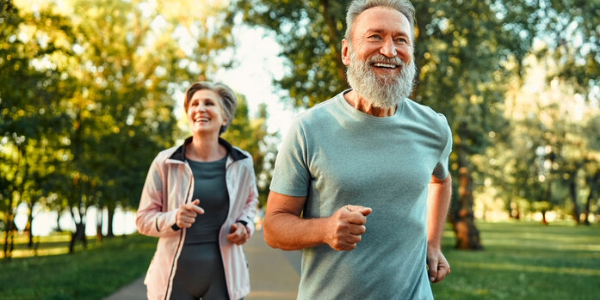Older adults experience less muscle soreness after exercise, a study shows, refuting the popular belief that aging muscles are less resilient. Younger adults were categorized as between 18 and 25 years old, and older adults as over 35 years old. One notable discovery was that muscle soreness was consistently lower in older adults, with a reduction of about 34% at 48 hours and 62% at 72 hours compared to younger individuals. Creatine kinase levels, an indicator of muscle damage, were about 28% lower in older adults at 24 hours post-exercise. The study was published in the Journal of Ageing and Physical Activity (JAPA).
Muscle Damage and Recovery in Older People Comparable to Younger People
The study, co-authored by Lancaster University, provides a comprehensive analysis of how aging affects muscle function, muscle soreness, and biochemical markers of muscle damage after exercise. By pooling data from 36 studies, the researchers found that older adults experience no greater loss of muscle function after exercise than younger individuals. The results suggest that muscle flexibility remains relatively stable with age despite physiological changes, so older people can continue to engage in regular physical activity without worrying about prolonged weakness or loss of function.
Interestingly, gender appeared to play a role in muscle function recovery, with men showing a slightly greater decline in muscle function after exercise than women. No influence of upper or lower body or type of training (strength training or endurance training) on muscle damage markers was observed. Lead author Dr. Lawrence Hayes of Lancaster Medical School said: “These results are significant because they challenge the widespread belief that aging muscles recover more slowly or are more susceptible to damage caused by exercise. This misconception often discourages older adults from engaging in regular physical activity for fear of prolonged pain or weakness.”
More Exercise in Old Age
If older people show fewer symptoms of muscle damage than previously thought, recovery strategies, training programs and post-workout care could be adapted accordingly. For example, older adults may not need significantly longer muscle soreness compared to younger people, potentially allowing for more frequent or more intense workouts, leading to better long-term health outcomes. Overall, this study highlights the importance of staying active throughout life and dispels the myth that aging equals frailty or impaired recovery.
These findings could help encourage older adults to become more involved in fitness activities, thus improving overall health, mobility and quality of life in aging populations. Dr. Hayes emphasized, “This means there is no age limit for exercise. So, get moving to live longer and healthier. Aim for 150 minutes of activity per week, add resistance training twice a week, and most importantly, find an exercise routine you enjoy. If you enjoy it, you are more likely to stick with it.”






